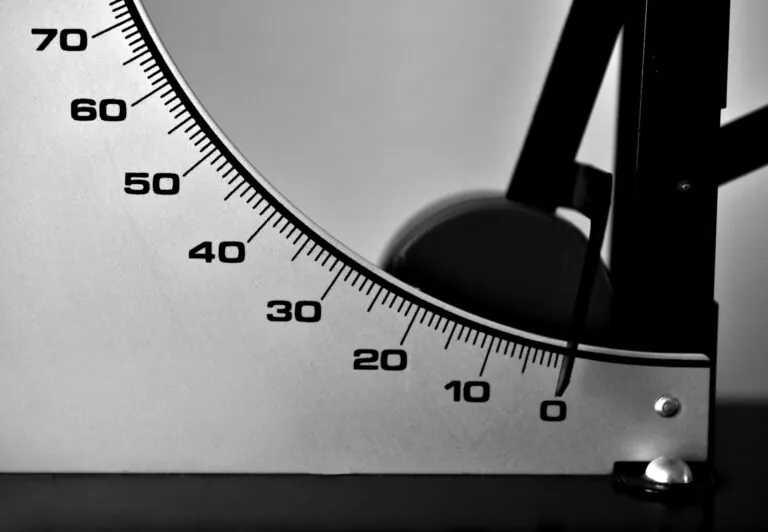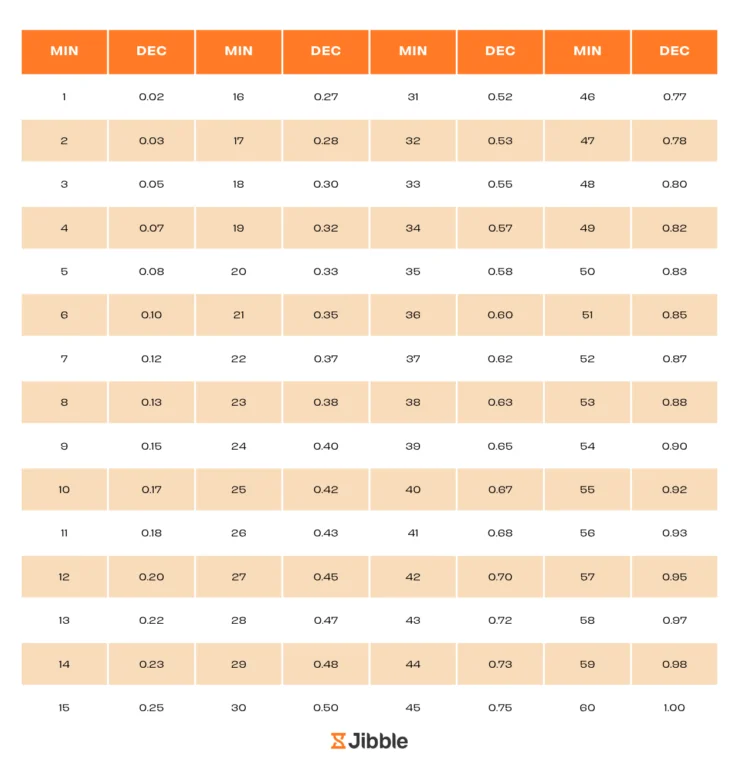-
تجربة رائعة مع حاسبة الساعات المستحقة للأجر
منصة رائعة لإدارة ساعات العمل. جِبل يهوّن علينا كثيرًا من الأعباء الإدارية المتعلقة بتوقيع كشف الحضور اليدوي. نستعين في عملنا بمستشارين يعملون من المنزل، وهذه المنصة تساعدنا بشكل كبير في إدارة ساعات عملهم.
إعداد الرواتب لا يستغرق الآن سوى دقائق
قبل جِبل كنا نستخدم الورقة والقلم لتتبع الوقت. كان إعداد سجلات الرواتب يستغرق ساعة على الأقل كل أسبوعين. أما الآن، فيستغرق بضع دقائق.
بصراحة، هذا البرنامج يسهّل كثيرًا من عملية إعداد الرواتب. ليست لدي أية مؤاخذات على جِبل
جِبل سهل الاستخدام للغاية. الخاصية التي تمكّن الموظفين من تسجيل الحضور والانصراف من الجوال تجعل تتبع ساعات العمل في غاية السهولة. كما اعتاد الموظفون استخدامه مباشرةً من دون مشكلات. بصراحة، هذا البرنامج يسهّل كثيرًا من عملية إعداد الرواتب... ليست لدي أية مؤاخذات على جِبل.
قم بأتمتة عملياتك مع جِبل
هذا البرنامج سهَّل إعداد الرواتب ومكَّن شركتي من التخلص من جداول البيانات والحصول على تقارير أفضل حول كيفية استخدامنا للوقت.
أفضل تطبيق سجلات دوام استخدمته على مدار أكثر من 20 عامًا من إدارة الرواتب!
قدرة جميع أفراد الفريق على تسجيل الحضور من الموقع أو عن بعد باستخدام البرنامج نفسه وفّرت علينا الكثير من الوقت. النظام سهل الاستخدام للغاية والتقارير بسيطة ويتم إنشاؤها بسرعة. فريق دعم العملاء سريع الاستجابة ومتعاون جدًا. بوجه عام، هذا أفضل تطبيق سجلات دوام استخدمته على مدار أكثر من 20 عامًا من إدارة الرواتب!
استخدام سلس وإدارة الرواتب بشكل أفضل مع حاسبة سجل الدوام
لقد حققنا نتائج رائعة باستخدام جِبل. أصبحنا ندير الرواتب بشكل أفضل، إذ لم يعد لأحدٍ عذر لعدم تسجيل الحضور والانصراف مع جِبل. فريق الدعم الفني في غاية المهنية ويستجيب بسرعة لأي مشكلة تواجهك. كما أنّ التطبيق سهل جدًا حتى إننا نستخدمه لتتبع ساعات العمل اليومية للموظفين.
سهل الاستخدام للغاية
منذ تفشي الجائحة، اتجهت معظم الشركات، بما فيهم شركتنا، إلى تطبيق نظام العمل من المنزل. بفضل جِبل وميزة سجلات الدوام الجاهزة التي يقدمها، صارت عملية حساب ساعات العمل وإعداد الرواتب في غاية السهولة. كما أنّ تطبيق الجوال سهّل علينا كثيرًا تسجيل الحضور والانصراف.
الحل الأمثل لإدارة الرواتب
هذا بالضبط ما أحتاج إليه لتتبع ساعات عمل الموظفين تلقائيًّا وربطهم مباشرة بنظام الرواتب لدينا! ممتاز لإدارة عدد كبير من الموظفين، ويتميز بسهولة الإدارة، وواجهة واضحة بلا تعقيد. ويبدو أنّ الموظفين يحبون استعمال تطبيق الجوال لتسجيل الحضور والانصراف.
FAQs
Some frequently asked questions...
Decimal time helps in payroll and billing through eliminating the issue that hours and minutes can’t easily be multiplied by traditional numbers.
Converting time into decimal hours transforms it into a simple number that can be directly multiplied by the hourly wage to calculate the employee’s total pay.
To convert minutes to decimal time, divide the number of minutes by 60.
This will give you the decimal equivalent of those minutes.
For example, 30 minutes divided by 60 equals 0.5 in decimal time.
Hours don’t need to be converted to decimal; it’s the minutes that require conversion to make calculations easier.
When converting decimal hours to hours, the whole number part stays as hours.
The decimal part is the part that would need to be multiplied by 60 to get the minutes.
For example, if you have 5.75 decimal hours, the 5 remains as hours, and multiplying 0.75 by 60 gives 45 minutes, making it 5 hours and 45 minutes.
Hours don’t need to be converted to decimal; it’s the minutes that need to be converted to decimal to simplify calculations.
When converting hours to decimal hours, the number of hours remains the same.
The minutes need to be divided by 60 to convert them into decimal form.
For example, if you have 5 hours and 45 minutes, divide the 45 minutes by 60, which equals 0.75.
Then, add the result to the 5 hours: 5 hours + 0.75 = 5.75 decimal hours.
The traditional time system is deeply ingrained in culture, and switching to decimal time would require costly global changes, especially in precise industries.
While it could simplify some calculations, the disruption it would cause outweighs any benefits, making the current system more practical.
Yes! Jibble offers a free hours to decimal calculator that converts hours and minutes into decimal format and vice versa, making it perfect for quick and accurate payroll calculations.
XWelcome to Jibble 👋أنشئ حسابًا وتخلص من متاعب تتبع الوقت – إنه مجاني مدى الحياة ولعدد غير محدود من المستخدمين!ابدأ الآن احجز عرضًا توضيحيًا
 لتبديل التحويل إلى الساعات والدقائق
لتبديل التحويل إلى الساعات والدقائق
When people refer to “decimal time,” they are often talking about the decimal format of time, which is the more common and practical usage. This involves expressing traditional time units—such as hours and minutes—as decimal values. For example, 1 hour and 30 minutes is written as 1.5 hours, and 45 minutes as 0.75 hours. However, it’s important to note that decimal time can also refer to a timekeeping system that was briefly used during the French Revolution. In this decimal time, the day is divided into 10 hours instead of 24 hours. An hour is made up of 100 minutes, and one minute is made up of 100 seconds. This technically means that there are 100,000 seconds in a day.
While decimal time was briefly used in real life during the French Revolution, today it’s mostly a theoretical concept. However, a decimal format is still used in fields like payroll or data analysis because it makes it easier to multiply or divide time.
Generally, we convert time to decimal in order to simplify calculations, especially for payroll. Employees track their hours in hours and minutes but their pay rates are expressed using the decimal system. Because of this, work time has to be converted into its number form (decimal) in order to calculate work hours and process payroll. Example: To calculate the pay of someone who worked 7 hours and 30 minutes in a day, one must: So, for someone working 7 hours and 30 minutes, the 30 minutes would need to be converted into a decimal (which would be 0.5). If the hourly rate is $15, the total owed wage would be: Without the conversion, the rate would be incorrect as below:What is the meaning of decimal time?
When to use the decimal time format?
Why do we convert time to decimal?

Photo by Ries Bosch on Unsplash
Who invented decimal time?
Decimal time was invented during the French Revolution as part of a broader effort to create a rational, secular alternative to the traditional systems that were tied to religion and monarchy.
Key figures behind the idea included astronomer Joseph Jérôme Lalande and Gilbert Romme, a mathematician and politician who supported the new system.
Although the system was officially adopted in France in 1795, it was ultimately abolished in 1806 by Napoleon Bonaparte, who sought to restore traditional timekeeping to align more closely with the Church and gain political support.
How do I convert hours to decimal?
To convert time to decimal hours, minutes must be divided by 60 to get the fraction of an hour.
The total is then added to the total number of hours.
This results in time expressed in decimal format.
Practical Example: Let’ s convert 5 hours and 45 minutes to decimal hours:
- First: Divide the minutes by 60: 45 minutes ÷ 60 = 0.75
- Second: Add the result to the hours: 5 hours + 0.75 = 5.75
The result is the decimal time: 5.75.
Sounds like a hassle?
That’s why we’ve created the converter above!
Minutes to decimal hours conversion chart

Jibble’s minutes to decimal hours conversion chart
